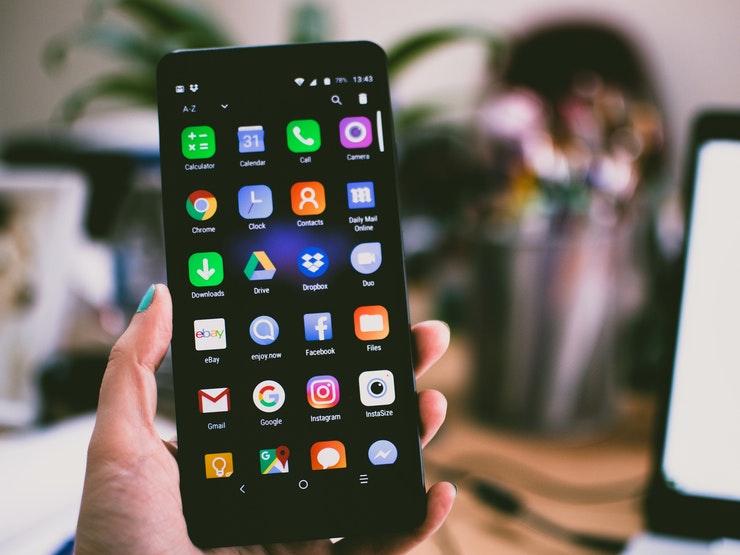
There is no need to put up with slow processes, which, let's face it, are frustrating, to say the least. You can improve your phone's performance by just implementing a few little tricks and changes for both Android and iPhone users.
Battery Life
Lithium-Ion batteries in current devices perform well if they're kept charged between 50% and 80%. This means that your battery should be topped up in little doses during the day rather than from a full charge each night. Finally, you should make sure you're only utilising licenced chargers, as unauthorised third party versions can damage your battery and some research indicates that they are hazardous.
Clear The Cache
Every action you take on a phone creates a digital footprint. They accumulate as RAM cache. Recovering lost performance can be achieved by clearing out the clutter. Apps and other background operations leave a trace, which helps them launch faster, consuming hard drive space and decreasing RAM available for other programmes you may wish to run later. You can clear the cache on the Settings menu by choosing Storage > Cache. To clear the cache partition, click "OK" when the device asks whether you want to do so.
Store Images on The Cloud
These days, many smartphones have the capabilities to allow automatic storage on different cloud accounts such as Google Drive, Microsoft Onedrive or Dropbox. This means should anything happen to your phone, all images and documents are retrievable.
It also means you do not need to store so many images on your phone, and you can delete them to help you free up space. If you don't want to delete all of your images, have a quick check for any blurry, mistaken shots and duplicates, such as using burst features when taking an image - how to delete duplicate photos on iphone.
Avoid Live Wallpapers
There are some fantastic looking live wallpapers on the market. However, they can put a strain on the CPU. This additional load on the CPU and battery diminishes performance and efficiency. To use fewer resources, you should use a static image as your phone's background.
Remove Unused Apps and Bloatware
A lot of the software included on smartphones contains unnecessary bloatware that might not interest you. Even if you only used a few of the apps that are pre-loaded, you can still have others that you don't use.
In addition to all of these programmes consuming storage and memory and requiring screen space, they slow down your device. Once you've found the offending programme, uninstall it to resolve the issue. If you can't uninstall them, they must be disabled.
Disable Mobile Data Settings
When you use your mobile data connection to download app updates automatically, your data will certainly be used up. However, most devices have the option of downloading updates only when using WiFi. Disable the “mobile data” option on non-essential apps to save your battery and decrease data usage.
Use your mobile browser's 'data saver' setting to prevent your data usage from hogging your plan's allowance while you're using mobile data (from emails, WhatsApp, etc.).
Assess Your Touchscreen
Consider using the manufacturer's recommended way to clean your screen when your touchscreen is not responding or begins to respond slowly. Clearing temporary internet files, cookies, and browser history also helps.
Device Shutdown
How often do you completely shut down your phone?
Be sure to shut down your gadget at least once every week totally. This will assist in maintaining the operating system performing optimally, and it will also help refresh the operating system.
Avoid Anti-Virus Apps
Limit the number of anti-virus software you install. Having a lot of them doesn't increase the security of your smartphone, but it does consume up storage and battery life.
Look at Your SD Card
Newer devices, some with improved storage capabilities mean the need for an SD is redundant. However, this isn't on all models, and typically mid-price or lower-end phones will require the use of an additional SD card.
The first time you use a new SD card, be sure that it's formatted properly for your device. The card slot should be free of dust and damage, and the card itself should be free of harm. If there are no obvious signs of damage, you may be able to connect it to a computer running a DIY software application to obtain the data.
Maybe It’s Time for an Upgrade?
Sometimes, you’re just really limited on what you can do when it comes to upgrades. When a phone is too old, well, it’s just too old, and this can be super annoying- even inefficient! So, that’s why it’s best just to accept the fact that sometimes, you’re just going to have to look into getting a new smartphone.
Fortunately, there are a lot of deals out there, such as getting a Samsung S23 for cheap, so you don’t have to worry about losing out on a bunch of money. But again, it’s best to keep your phone as long as possible and make upgrades since this is eco-friendly, but don’t feel bad about upgrading when the time has come and it’s actually needed.
*Collaborative post






No comments